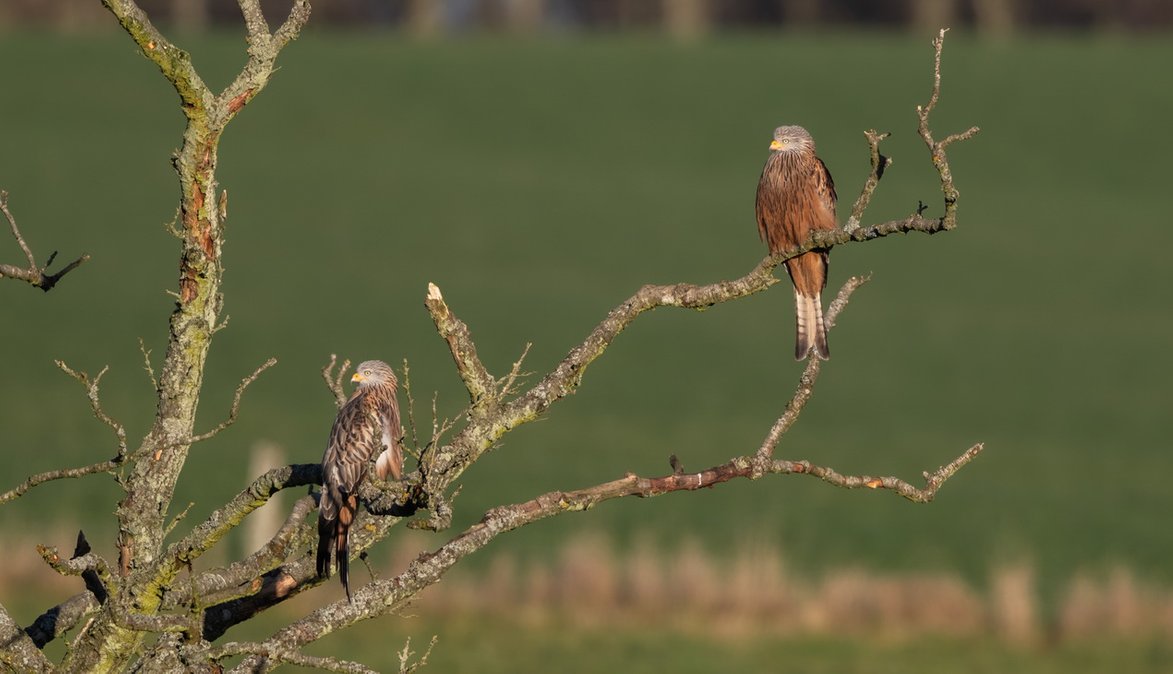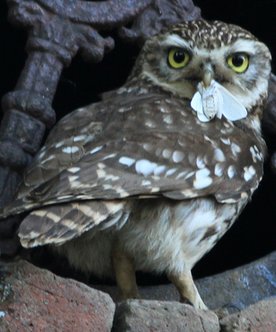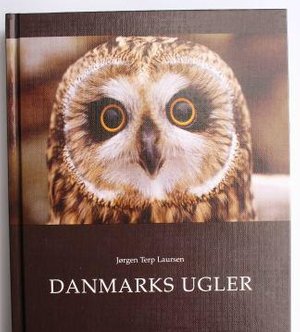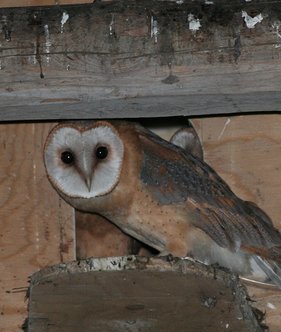Red kites in Denmark and in Wales
Red kites at Gigrin Feeding Station in Wales.
Foto: Carsten Clausen.
- Summary
The Red Kite Milvus milvus in Eastern Jutland: Settlement,
change in numbers and habitat in Denmark.
At least 90% of all Red Kites breed in Europe, and hence European
countries have a strong obligation to protect the species.
Although protected by the European Birds Directive, the Red Kite - is subject to several threats such as persecution by poisoning and hunting, wind turbines and habitat degradation.
- In the 19th century, the Red Kite was an abundant breeding bird in Denmark. However, due to intensive persecution of raptors, the Red Kite disappeared as a breeding bird in 1906. Following national protection of the Red Kite in 1922, and of all raptors in 1967, the Red Kite resettled in Denmark in the early 1970s.
The first breeding pairs of Red Kite were reported from Eastern
Jutland around 1980. I compiled information from an area of approximately 4800 km2 from my own records and those of other ornithologists, biologists, farmers, hunters, landowners, municipalities and technical journals together with information from media, Facebook, web-pages, BirdLife Denmark’s database and the literature in order to describe the settlement of Red Kite in Eastern Jutland, the following rise in numbers, and aspects of breeding conditions, habitat choice and wintering. From the initial settlement, the number of breeding pairs
increased to about 20 pairs in 2015-2017 followed by a remarkable
increase to 110 to 112 pairs in 2019-2020. However, the most recent rise in numbers is mainly ascribed to a significant expansion of the census area and time spent in the field. During the period 2018-2020, the breeding density averaged 2.24 pairs per 100 km2. Reproductive success constituted 2.44 fledged young per successful pair during the period 2015-2017 and 2.05 between 2018 and 2020. Production of young was comparable to that found in other European studies.
Overall, 91% of all Red Kites reported during mainly the summer half-year were observed in connection with fields recently subject to farming processes, in particular mowed grassland (44%). The breeding habitat was mainly old deciduous woodland (86%). About half (54%) of the breeding sites were reported from woodland between 11 and 100 hectares in size. Compared to the available sizes of all woodland in the area, Red Kites did not show any preferences. The earliest mating and nest building was observed on 2 and 4 April, respectively. When territorial disputes were recorded, it was mainly directed towards Common Buzzard Buteo buteo and never between Red Kites. Red Kites sometimes took over nests from Honey Buzzard Pernis Apivorus and Raven Corvus corax.
Raptors are generally sensitive to human activity at the breeding site, and Red Kites abandoned the breeding site on a number of occasions. Although not confirmed, observers assessed that activities in woodland such as logging and general outdoor activity were the main reasons for Red Kites abandoning a breeding location. A large nocturnal winter roost of Red Kite with up to 133 individuals was reported from Djursland and constituted a large Siden Rød Glente genindvandrede i Østjylland omkring 1980, er bestanden steget til ca. 110 par. Foto: Carsten Clausen.
160 Rød Glente i Østjylland proportion of the entire Red Kite wintering population in Denmark. The frequent observations of Red Kite in Eastern Jutland in connection with grassland are in line with other studies, which
emphasize the importance of access to a mosaic landscape comprising arable land, meadows and wetlands.
Referencer
Aebischer, A. 2009: Der Rotmilan: Ein faszinierender Greifvogel. – Haupt Verlag, Bern.
Bijlsma, R.G. 2019: Natuurtijdschriften. – De Takkeling 27 (1).
BirdLife International 2020: Milvus milvus. The IUCN Red List of Threatened Species 2020: e.T22695072A181651010. –
https://dx.doi.org/10.2305/IUCN.UK.2020-3.RLTS.T226950-
72A181651010.
BirdLife International 2023: Species factsheet: Milvus milvus. – http://datazone.birdlife.org/species/factsheet/red-kite-milvus-milvus.
Bomholt, P. 1980: Oversigt over Rød Glentes Milvus milvus yngleforekomster i Danmark i 1976-1979. – Dansk Orn. Foren. Tidsskr. 74: 76-77.
Bomholt, P. 1997: Bestanden af Rød Glente Milvus milvus i et censusområde i det sydøstlige Jylland, 1980-1995. – Dansk Orn. Foren. Tidsskr. 91: 53-58.
Bomholt, P., M. Stabell & T. Nyegaard 2007: Moniteringsvejledning for Rød Glente i DOF’s Projekt Truede og Sjældne Ynglefugle 2013-2017. – Rapport.
Bønløkke, J., J.J. Madsen, K. Thorup, K.T. Pedersen … & C. Rahbek 2006: Dansk Trækfugleatlas. – Rhodos.
Carter, I. 2001: The Kite. – Arlequin Press.
Christensen, J.S., T.H. Hansen, P.A.F. Rasmussen, T. Nyegaard … &
T. Bregnballe 2022: Systematisk oversigt over Danmarks fugle 1800-2019. – Dansk Ornitologisk Forening.
Dansk Ornitologisk Forening 2023: Danmarksrekord af røde glenter i en grøn vinter. – DOF-nyhed 13. januar 2023 https://www.
dof.dk/om-dof/nyheder?nyhed_id=2131 (besøgt 27.02.2023).
Dybbro, T. 1976: De danske ynglefugles udbredelse. – Dansk Ornithologisk Forening.
Gerlach, B., R. Dröschmeister, T. Langgemach, K. Borkenhagen …
& J. Kamp 2019: Vögel in Deutschland – Übersichten zur Bestandssituation. – Bundesamtes für Naturschutz.
Grell, M.B. 1998: Fuglenes Danmark. – G.E.C. GAD & Dansk Ornitologisk Forening.
Grell, M.B. 2003: Forslag til forvaltningsplan for bevarelsen af Rød Glente Milvus milvus i Danmark. – DOF. Grüneberg, C. & J. Karthäuser 2019: Verbreitung und Bestand des Rotmilans Milvus milvus in Deutschland. – Vogelwelt 139: 101-
116.
Hammershaimb, J. 1986: Danske Skovdistrikter. – Danske Forstkandidaters
Forening.
Heuck, C., R. Brandl, J. Albrecht & T.K. Gottschalk 2013: The potential
distribution of the Red Kite in Germany. – J. Ornithol. 154:
911-921.
Katzinger, R. 2021: Project: LIFE EUROKITE (LIFE18 NAT/AT/000048).
– Newsletter August 2021.
Kjellén, N. 1995: Projekt Glada. Årsrapport 1994. – Anser 34: 11-16. Knott, J., P. Newbery & B. Barov 2009: Action plan for the red kite Milvus milvus in the European Union. – BirdLife International and RSPB report for the European Union.
Laursen, J.T. 1993: Ynglefund af Rød Glente. – Gejrfuglen 29: 27-29.
Laursen, J.T. 2001: Rød Glente i Århus Amt status 1979-2001. – Rovfuglegruppen,
rapport til DOF.
Laursen, J.T. 2020: Rød Glente i Østjylland. – Facebook.
Life Eurokite 2021: Results of the “1st LIFE EUROKITE Winter Count of 267 selected regularly counted Red Kite roosting sites in whole Europe”; 08.01.-10.01.2021. – https://www.life-eurokite.
eu/files/LIFE_EUROKITE_content/Publikationen/LIFE_EUROKITE_
Winter_Count_Results_2021.pdf (besøgt 06.02.2023).
Løppenthin, B. 1967: Danske ynglefugle i fortid og nutid. – Odense
Universitetsforlag.
Maciorowski, G., P. Zduniak, M. Bocheński, M. Urbańska … & M.
Polakowski 2021: Breeding habitats and long-term population
numbers of two sympatric raptors – Red Kite Milvus milvus and Black Kite M. migrans – in the mosaic-like landscape of western Poland. – J. Ornithol. 162: 125-134.
Martínez-Abraín, A., D. Oro, J. Jiménez, G. Stewart & A. Pullin 2010:
A systematic review of the effects of recreational activities on
nesting birds of prey. – Basic and Appl. Ecol. 11: 312-319.
Meltofte, H., L. Dinesen, D. Boertmann & P. Hald-Mortensen 2021:
Danmarks fugle gennem to århundreder. – Dansk Orn. Foren. Tidsskr. 115: 1-184.
Moeslund, J.E. 2020: Den dansk Rødliste 2019. – Institut for Bioscience.
Aarhus Universitet.
Nicolai, B. 2011: Rotmilan Milvus milvus und andere Greifvögel (Accipitridae)
im nordöstlichen Harzvorland. – Ornithol. Jahresberichte
Museum Heineanum 29.
Nielsen, J.T., K. Storgaard, G. Preston, H.E. Jørgensen … & P. Rasmussen
2023: Danmarks ynglende rovfuglebestande 1972- 2021. – Dansk Orn. Foren. Tidsskrift 117: 69-85.
Nill, D. 2015: Rotmilan Milvus milvus. – Förderverein für Ökologie und Monitoring von Greifvögel und Eulenarten e.V.
Noer, H. & H. Secher 1990: Effects of legislative protection on survival
rates and status improvements of birds of prey in Denmark. – Dan. Rev. Game Biol. 14 (2): 1-63.
Nyegaard, T., H. Meltofte, J. Tofft & M.B. Grell 2014: Truede og sjældne ynglefugle i Danmark 1998-2012. – Dansk Orn. Foren. Tidsskr. 108: 1-144.
Palm, B. 1986. Danmarks Ynglefugle 1801-1899. Lappedykkere til Natravn. – Eget forlag.
SLU Artdatabanken 2020: Rödlista 2020 – övergripande delar. Artfakta. – SLU Artdatabanken https://artfakta.se/naturvard/ taxon/milvus-milvus-100082 (besøgt 06.02.2023).
Stevens, M., C. Murn & R. Hennessey 2020: Population change of Red Kites Milvus milvus in central southern England between 2011 and 2016 derived from line transect surveys and multiple covariate distance sampling – Acta Ornithol. 54: 243-254.
Forfatterens adresse:
Jørgen Terp Laursen (jtl(2)kirkeugle.dk), Engdalsvej 81b, 8220
Brabrand, Denmark -
See the full article:
-
Dansk Orn. Foren. Tidsskr. 117 (2023): 154-160
.
Breeding approx. 350 pairs of Red Kite in Denmark 2022-2023 and the population is increasing.
Webmaster til hjemmesiden har i en meget lang årrække arbejdet med de danske ugler og har udgivet bogen "Danmarks Ugler" og skrevet mange artikler om de danske ugler.
Vi giver gode råd om ugler og efterlyser oplysninger om de danske ugler
- kontakt venligst Jørgen Terp Laursen.
På hjemmesiderne www.kirkeugle.dk og www.danmarksugler.dk kan du læse meget mere.
Alle oplysninger om kirkeugle og slørugle fra hele landes modtages med tak.



